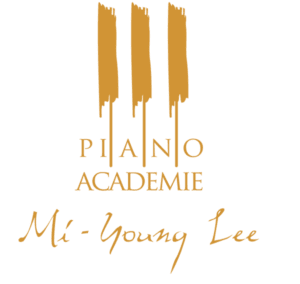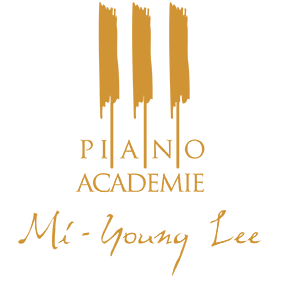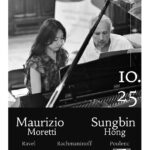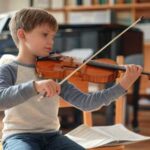Categories
- Actualités (2)
- Bar-le-Duc (15)
- Box (28)
- Class (4)
- Concert (10)
- Conseils (9)
- En ligne (15)
- Fullwidth (2)
- Musical awakening (1)
- News (1)
- Paris (55)
- Pedagogy (1)
- Sheet Music (12)
- Solfège (1)
- Stage (1)
Recent Posts
- Zhexiang Li - Music Above All14 October 2025
- Concert Exceptionnel : Sungbin Hong et Maestro Maurizio Moretti15 September 2025
- Puis-je mettre mon enfant au piano et au violon ?23 February 2025
- Zhexiang Li - Music Above All
-

- Overview
- Children
- Adults
- Online lessons
- Shop
- Booking
- Overview
- Children
- Adults
- Online lessons
- Shop
- Booking
Pedagogy
Introduction
For nearly a decade, Piano Academy has been shaking up the conventions of piano education. While the traditional approach relies on private lessons, our school has chosen the path of innovative group classes. With 9 years of experience, over 800 students, and a 90% rate of group lessons, we have developed a unique method based on Mi-Young LEE’s pedagogy, which combines rigor, conviviality, and measured progress.
1. An innovative pedagogical approach
The Mi-Young LEE Method
Our method is based on a sequential and compartmentalized approach. Each piece is broken down into measures, with each one needing to be perfectly mastered before moving on to the next. This approach ensures a deep understanding and lasting memorization, while giving students the opportunity to correct their mistakes without compromising the entire piece.
The Impact of the Collective
The choice of group lessons allows students to progress together, share their experiences, and enrich one another. This dynamic creates a stimulating and friendly atmosphere, fostering learning and self-confidence.
2. An interactive pedagogical approach
At Piano Academy, the essence of our method lies in the personalized attention provided within a group setting. During each class, the teacher actively moves from one student to another, demonstrating techniques, correcting mistakes, and tailoring advice to each individual’s specific needs. This dynamic fosters rapid and targeted progress while creating a stimulating atmosphere where students learn from one another. Additionally, music theory is offered through dedicated group classes held online at specific times, allowing each student to strengthen their theoretical understanding and improve their sheet music reading skills.
| Critère | Piano Académie | Autres méthodes d’apprentissage du piano (traditionnelles et classiques) |
|---|---|---|
| Mode de cours | Cours collectifs en présentiel favorisant la dynamique de groupe et l’émulation entre pairs. | Leçons individuelles en face à face, parfois en petits groupes, avec un suivi très personnalisé. |
| Approche pédagogique | Méthode séquentielle et compartimentée (travail par mesure) pour maîtriser progressivement chaque section d’un morceau. | Approche globale de la partition ou exercices techniques classiques (ex. méthodes Alfred, Bastien). |
| Suivi et correction | L’enseignant circule dans le groupe pour corriger immédiatement et adapter ses conseils en temps réel à chacun. | Suivi individualisé et corrections approfondies, avec moins d’interaction en groupe. |
| Motivation et engagement | Dynamique de groupe forte et engagement élevé, avec un taux de résiliation inférieur à 5 %, propice à des progrès rapides. | Motivation variable selon l’élève ; l’isolement peut limiter l’engagement, notamment chez les adultes. |
| Tarification et accessibilité | Formules abordables et flexibles (jusqu’à 6,25 €/h pour 5 cours/semaine, environ 15 €/h pour 2 cours/semaine) sur plusieurs locaux parisiens. | Cours individuels souvent plus coûteux et moins flexibles en termes de planning. |
| Complément pédagogique | Cours de solfège en groupe, en ligne sur des créneaux dédiés, pour renforcer théorie et lecture. | Solfège généralement intégré aux leçons individuelles ou aux cours en petits groupes. |
| Adaptabilité aux adultes | Conçue pour répondre aux besoins des adultes (jeunes, actifs, séniors) avec des résultats rapides et mesurables. | Souvent centrée sur les enfants/débutants, avec des horaires et approches moins adaptés aux contraintes des adultes. |
Comparatif des méthodes d’apprentissage du piano
Mode de cours
Piano AcadémieCours collectifs en présentiel favorisant la dynamique de groupe et l’émulation entre pairs.
Autres méthodesLeçons individuelles en face à face, parfois en petits groupes, avec un suivi très personnalisé.
Approche pédagogique
Piano AcadémieMéthode séquentielle et compartimentée (travail par mesure) pour maîtriser progressivement chaque section d’un morceau.
Autres méthodesApproche globale de la partition ou exercices techniques classiques (ex. méthodes Alfred, Bastien).
Suivi et correction
Piano AcadémieL’enseignant circule dans le groupe pour corriger immédiatement et adapter ses conseils en temps réel à chacun.
Autres méthodesSuivi individualisé et corrections approfondies, avec moins d’interaction en groupe.
Motivation et engagement
Piano AcadémieDynamique de groupe forte et engagement élevé, avec un taux de résiliation inférieur à 5 %, propice à des progrès rapides.
Autres méthodesMotivation variable selon l’élève ; l’isolement peut limiter l’engagement, notamment chez les adultes.
Tarification et accessibilité
Piano AcadémieFormules abordables et flexibles (jusqu’à 6,25 €/h pour 5 cours/semaine, environ 15 €/h pour 2 cours/semaine) sur plusieurs locaux parisiens.
Autres méthodesCours individuels souvent plus coûteux et moins flexibles en termes de planning.
Complément pédagogique
Piano AcadémieCours de solfège en groupe, en ligne sur des créneaux dédiés, pour renforcer théorie et lecture.
Autres méthodesSolfège généralement intégré aux leçons individuelles ou aux cours en petits groupes.
Adaptabilité aux adultes
Piano AcadémieConçue pour répondre aux besoins des adultes (jeunes, actifs, séniors) avec des résultats rapides et mesurables.
Autres méthodesSouvent centrée sur les enfants/débutants, avec des horaires et approches moins adaptés aux contraintes des adultes.




